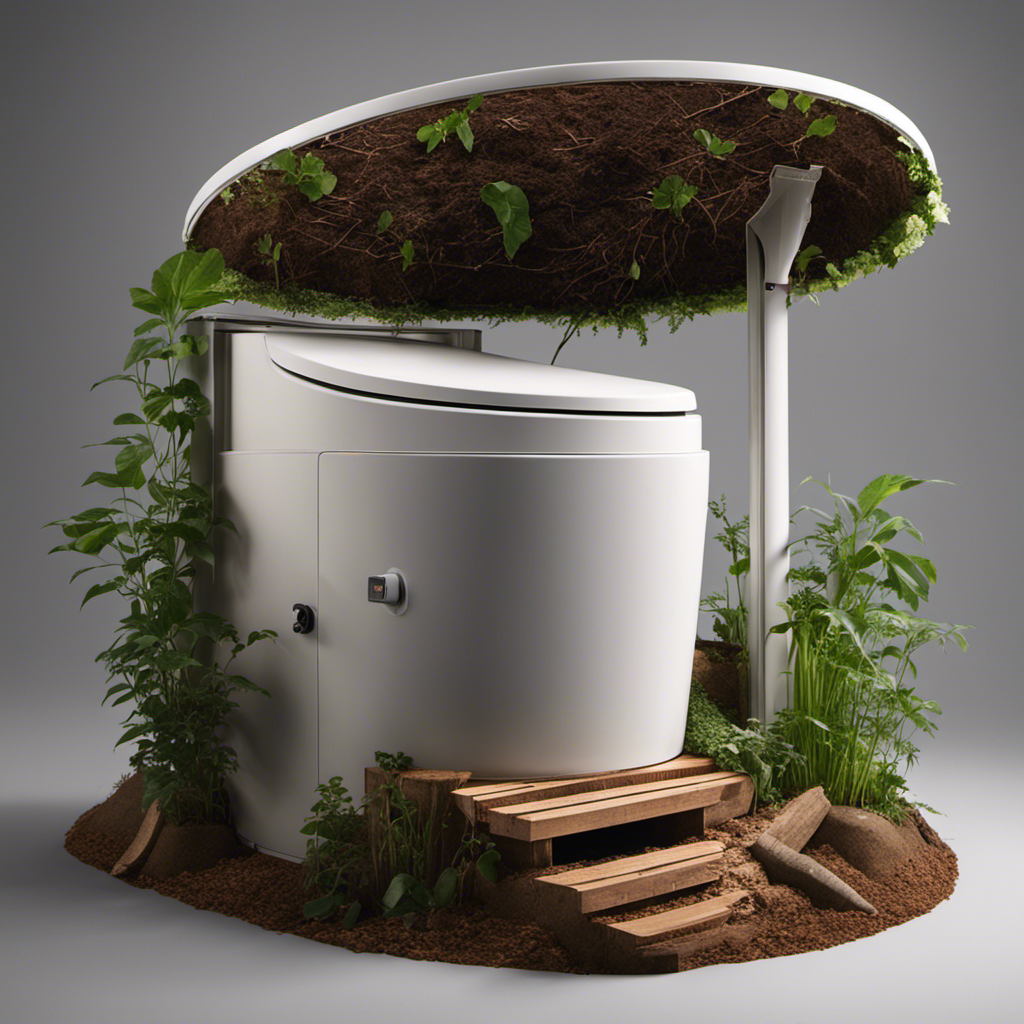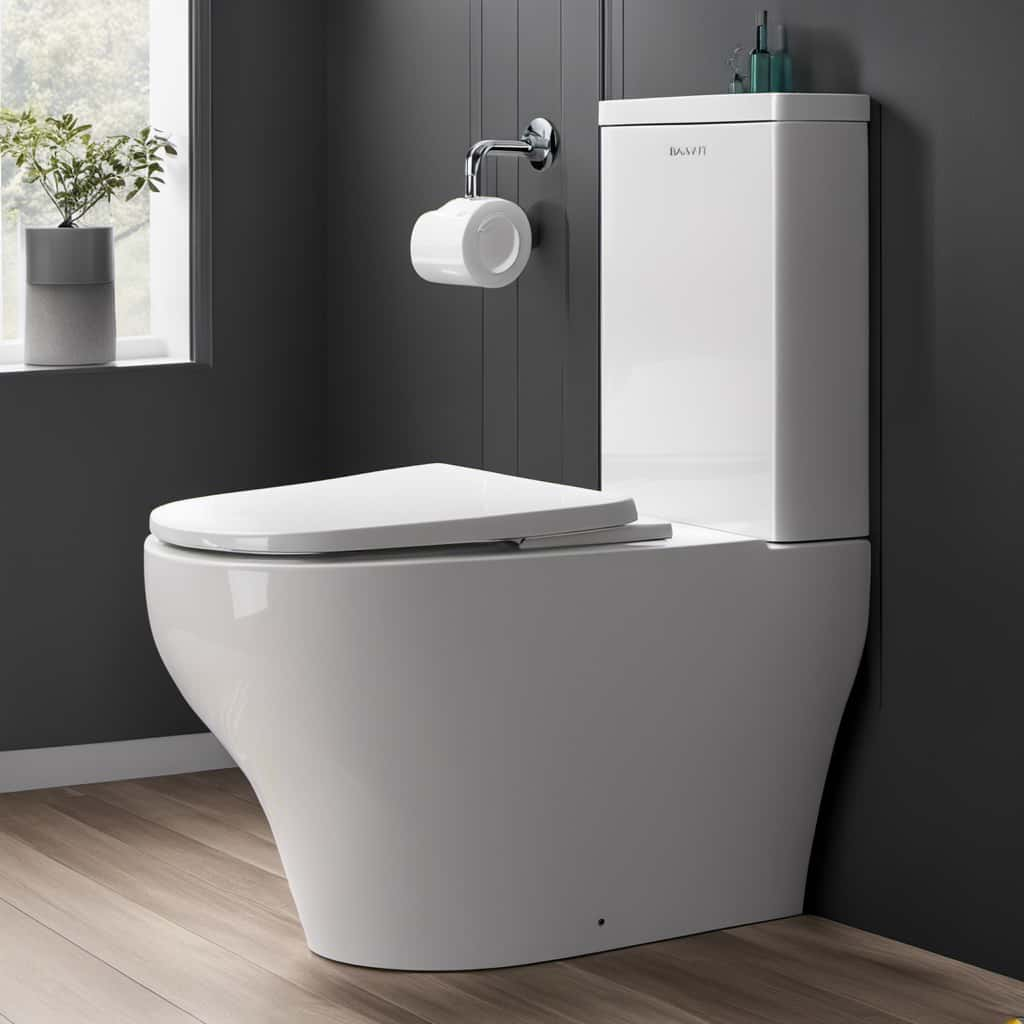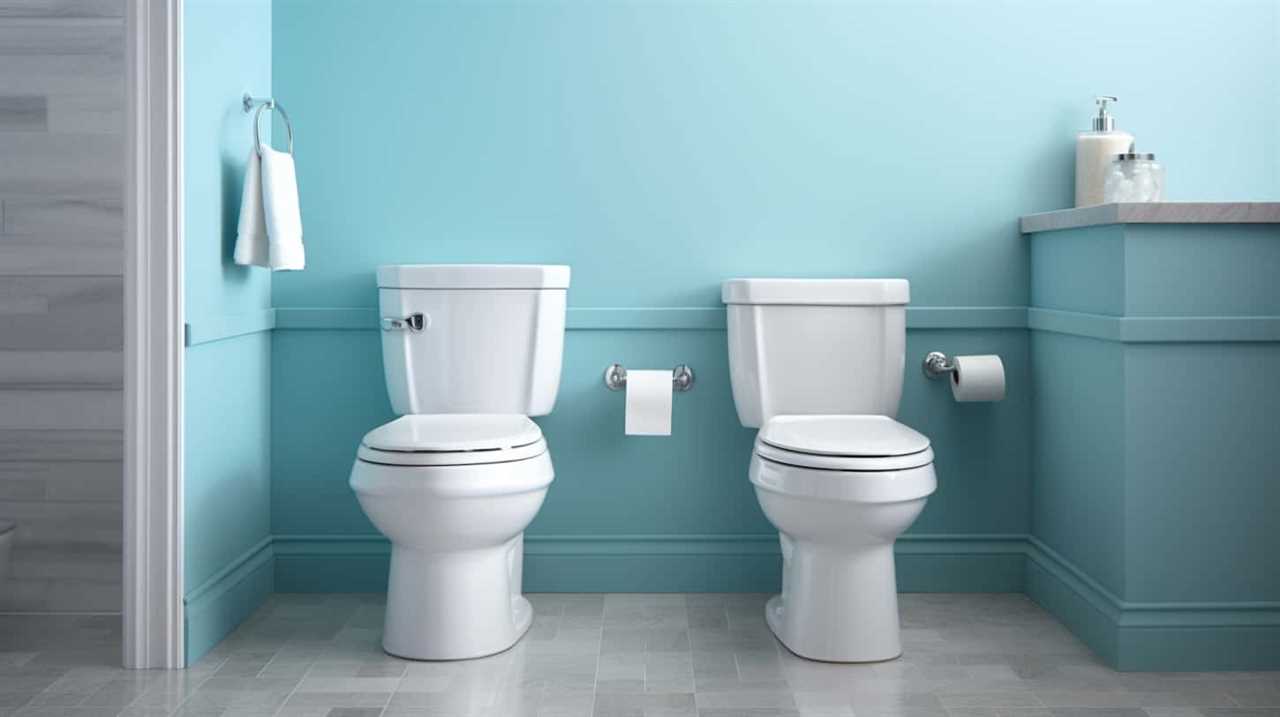Have you ever wondered how a compost toilet works? Well, let me break it down for you.
In this article, I will delve into the fascinating world of compost toilets, explaining their inner workings and shedding light on the process of decomposition.
We will explore the various components, learn how to maintain and manage a compost toilet system, and delve into the benefits and considerations of using one.
So, let’s dive in and uncover the secrets of this eco-friendly sanitation solution.
Key Takeaways
- Composting toilets use natural processes to break down human waste into nutrient-rich compost.
- The composting process is facilitated by bacteria and microorganisms in a warm and moist environment.
- Compost toilets reduce water consumption and provide sustainable waste management.
- Regular maintenance and adherence to local regulations are important for proper functioning of compost toilets.
The Basics of Composting Toilets
Composting toilets use natural processes to break down human waste into compost. This composting process is an effective and sustainable method of waste management.
The key to understanding how composting toilets work lies in the decomposition process. When waste is deposited into the toilet, it enters a chamber where it is mixed with bulking agents such as sawdust or coconut coir. These agents help to create the ideal conditions for decomposition by providing carbon, which balances the nitrogen-rich waste.
As the waste decomposes, bacteria and other microorganisms break down the organic matter, turning it into nutrient-rich compost. This compost can then be safely used as a soil amendment for gardening or landscaping purposes.
Understanding the components of a compost toilet is essential to grasp its functionality and how it contributes to sustainable waste management.
Understanding the Components of a Compost Toilet
Understanding the components of a compost toilet will help you grasp how it functions. A compost toilet is a simple yet effective system that requires specific construction and regular maintenance.
Here are the key components of a compost toilet:
-
Collection Chamber: This is where human waste is deposited and stored for decomposition.
-
Seat and Lid: The seat provides a comfortable sitting surface, while the lid keeps odors contained and prevents flies from entering.
-
Composting Chamber: This is where the magic happens. It contains organic materials like sawdust or peat moss, which help facilitate the decomposition process.
-
Ventilation System: Proper airflow is crucial for decomposition. A ventilation pipe ensures that fresh air enters the chamber while odors are expelled.
Regular maintenance is essential to keep a compost toilet functioning optimally. This includes regularly adding organic materials, managing moisture levels, and monitoring temperature.
The Process of Decomposition in a Compost Toilet
The key components of a compost toilet work together to facilitate the fascinating process of decomposition. When waste is deposited into the compost toilet, it undergoes a series of biological and chemical transformations. Microorganisms, such as bacteria and fungi, play a crucial role in breaking down the organic matter present in the waste. These microorganisms thrive in the warm and moist environment of the compost toilet, where they rapidly consume the waste, converting it into simpler compounds. As the waste decomposes, it releases nutrients and organic matter, which are absorbed by the microorganisms and transformed into nutrient-rich soil. This process, known as composting, not only reduces the volume of waste but also produces a valuable end product that can be used to enrich gardens and agricultural fields.
| Microorganisms | Nutrient-Rich Soil |
|---|---|
| Bacteria | Nitrogen |
| Fungi | Phosphorus |
| Potassium | |
| Organic Matter |
Maintaining and Managing a Compost Toilet System
Maintaining and managing a compost toilet system requires regular maintenance and proper monitoring of the waste decomposition process. As the sole caretaker of my compost toilet, I have learned the importance of following a systematic approach to keep it functioning optimally.
Here are some key steps I take to ensure effective compost toilet maintenance and management:
-
Regular Turning of the Compost: Turning the compost regularly helps to aerate it and promote the breakdown of waste materials.
-
Temperature Monitoring: Monitoring the temperature inside the compost pile is crucial for efficient decomposition. This can be done using a compost thermometer.
-
Adding Carbon-Rich Materials: Adding carbon-rich materials like sawdust or dried leaves helps to balance the nitrogen content in the compost, leading to better decomposition.
-
Controlling Moisture Levels: Maintaining the right moisture levels is essential for proper decomposition. I use a moisture meter to ensure the compost is neither too dry nor too wet.
Benefits and Considerations of Using a Compost Toilet
Using a compost toilet has several advantages, such as reducing water consumption and providing nutrient-rich compost for gardening. It is an eco-friendly alternative to traditional flush toilets, as it promotes sustainability and reduces pollution. However, there are also some considerations and guidelines to keep in mind when using a compost toilet.
Here is a table showcasing the pros and cons of using a compost toilet:
| Pros | Cons | Regulations and Guidelines |
|---|---|---|
| 1. Water conservation | 1. Initial cost and installation | 1. Check local regulations before installation |
| 2. Produces valuable compost | 2. Requires regular maintenance and management | 2. Compost only human waste and biodegradable items |
| 3. Decreases sewage pollution | 3. Odor issues | 3. Properly maintain and clean the system |
To ensure the optimal functioning of a compost toilet, it is crucial to follow composting toilet regulations and guidelines set by local authorities. This includes checking local regulations before installation, composting only human waste and biodegradable items, and properly maintaining and cleaning the system. By adhering to these guidelines, the benefits of using a compost toilet can be maximized while minimizing any potential drawbacks.
Frequently Asked Questions
Are Compost Toilets Legal to Use in All Areas?
Composting regulations vary by area, but compost toilets offer numerous environmental benefits. They reduce water usage, prevent pollution, and create nutrient-rich compost. However, it’s important to check local regulations before installing one.
How Often Should a Compost Toilet Be Emptied?
Compost toilet maintenance is an important aspect of enjoying the benefits of a composting toilet. Regular emptying is necessary to ensure proper decomposition and prevent unpleasant odors.
Can a Compost Toilet Produce Harmful Odors?
Yes, a compost toilet can produce harmful odors if not properly maintained. Regularly adding a carbon-rich material like sawdust helps control odors by absorbing moisture and neutralizing the smell.
Are There Any Specific Types of Waste That Should Not Be Added to a Compost Toilet?
There are certain types of waste that should not be added to a compost toilet to ensure proper maintenance. It is crucial to avoid adding non-biodegradable materials, such as plastics or chemicals, as they can disrupt the composting process.
How Does a Compost Toilet Compare to a Traditional Flush Toilet in Terms of Water Usage?
Compost toilets use significantly less water compared to traditional flush toilets, making them a more sustainable option. This water conservation is crucial in the face of increasing water scarcity and environmental concerns.
Conclusion
In conclusion, the compost toilet is a remarkable system that symbolizes our ability to create sustainable solutions for our waste management needs. Its intricate components work in harmony to transform human waste into nutrient-rich compost, embodying the power of nature’s recycling process.
By maintaining and managing this system effectively, we can contribute to a healthier environment and reduce our ecological footprint. The benefits are clear: conserving water, minimizing pollution, and fostering a more sustainable future.
Let’s embrace the potential of the compost toilet and embrace a greener way of living.










